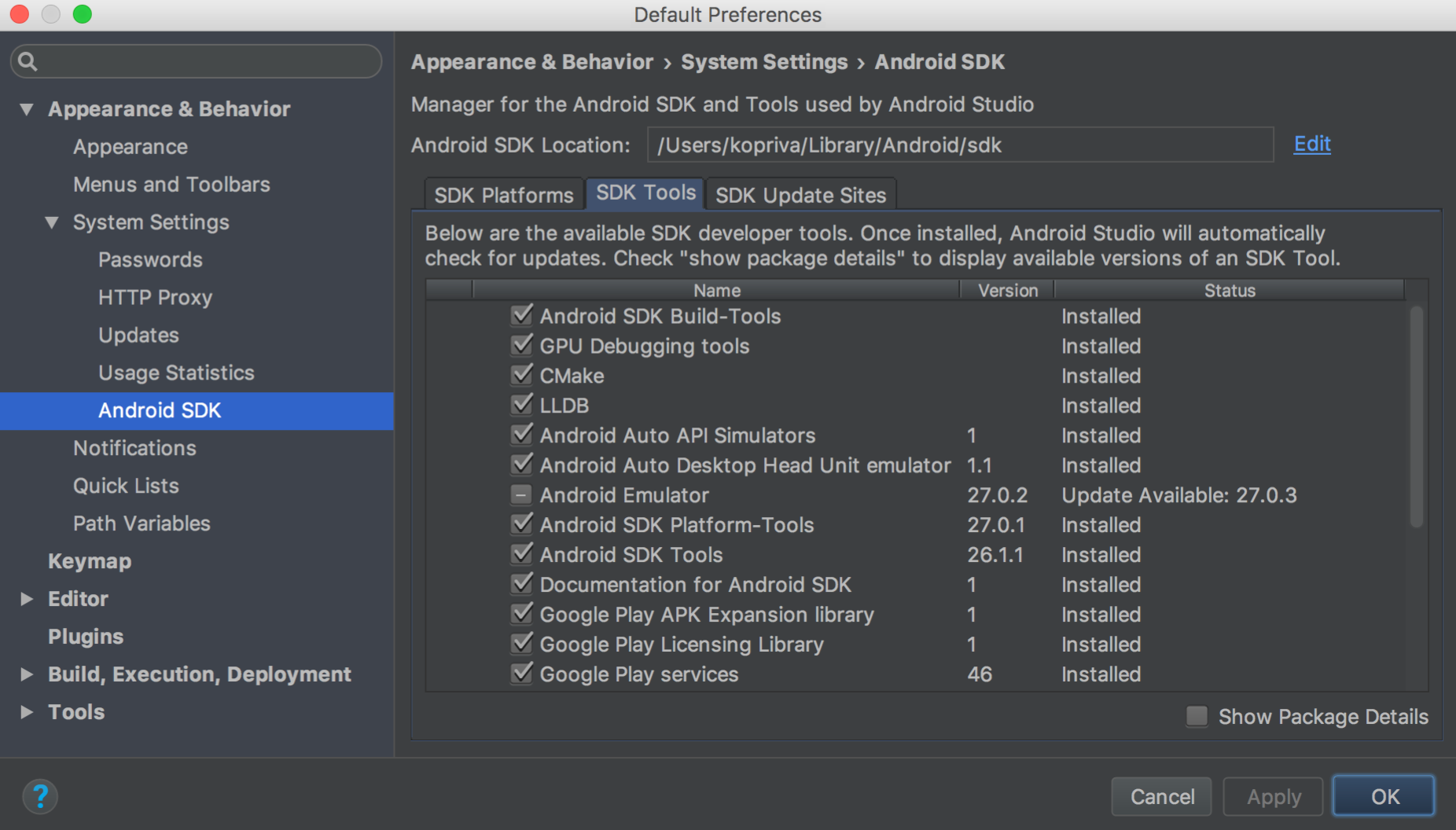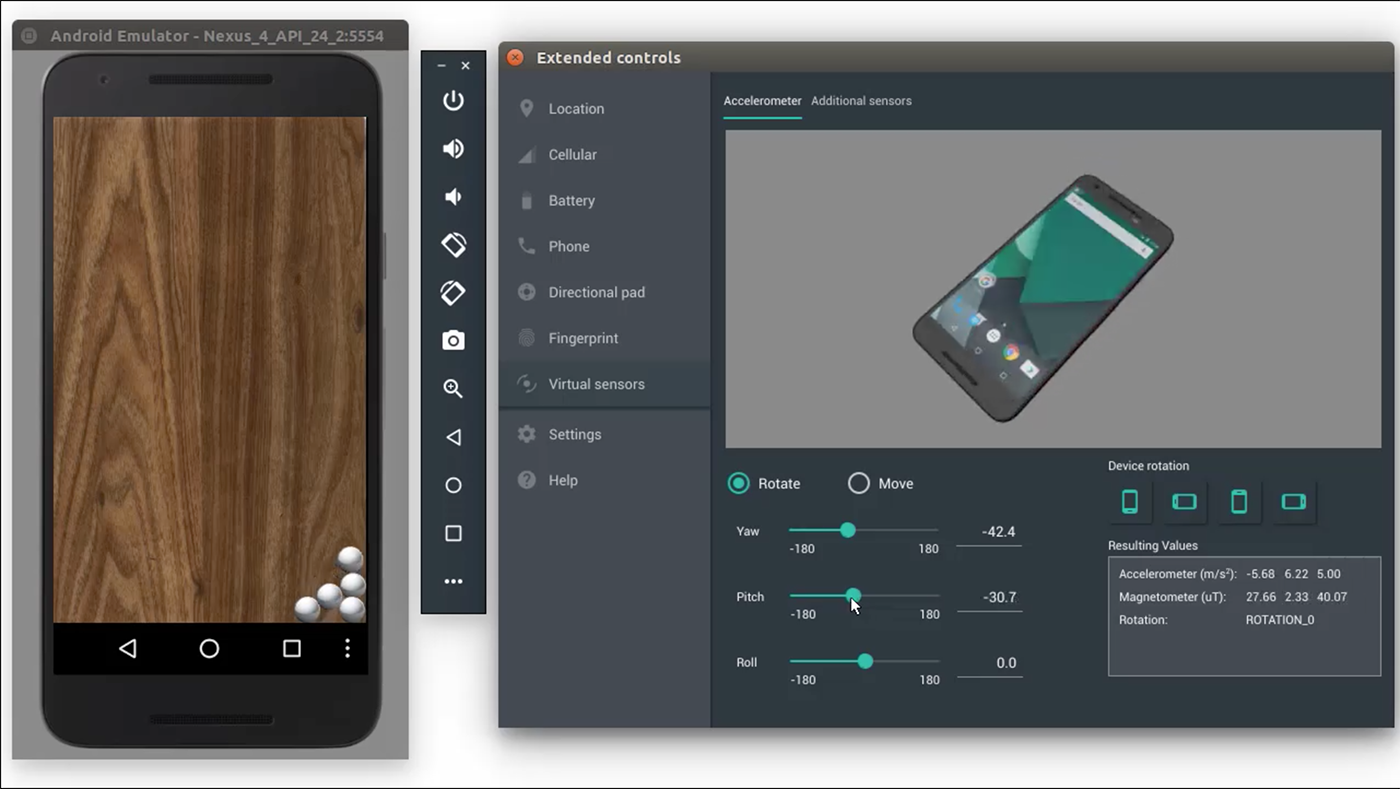
Arm Emulator For Android Studio Install A New
Also Read: Installing Android Studio and Environment SetupIf you want to use Android Studio/AVD there are also instructions for packing up/installing your custom build instead of the default AOSP images that Google. I decided to share the solution for this problem so that it can help other developers. As I am also an android developer so I face this problem each time I install a new copy of android studio in my laptop. We can’t run Android Virtual Device (AVD) without intel haxm.

6.8 Android Emulator: Window is shaking and blinking when used in WM tiled mode 6.7 Android Emulator: no keyboard input in xfwm4 6.5 libGL error: failed to load driver: swrast OR AVD does not load and no error message displayed 6.4 ValueError: unsupported pickle protocol
special USB sticks / regular USB stick with adapter Media Transfer Protocol for modern Android devices 6.10 adb: sideload connection failed: insufficient permissions for deviceThere are various ways to transfer files between a computer and an Android device:
Android StudioAndroid Studio is the official Android development environment based on IntelliJ IDEA. qrcp AUR – transfer files over wifi from your computer to your mobile device by scanning a QR codeThe officially supported way to build Android apps is to use #Android Studio. sendanywhere AUR – cross-platform file sharing KDE Connect ( kdeconnect) – integrates your Android device with the KDE or Gnome desktop (featuring synced notifications & clipboard, multimedia control, and file/URL sharing). client or server for protocols that can be used to transfer files (eg.
Some Android SDK packages are also available as AUR packages, they generally install to /opt/android-sdk/.Android-sdk-cmdline-tools-latest-dummy AURApkanalyzer, avdmanager, lint, retrace, screenshot2, sdkmanagerAapt, aapt2, aidl, apksigner, bcc_compat, d8, dexdump, dx, lld, llvm-rs-cc, mainDexClases, split-select, zipalignAdb, dmtracedump, e2fsdroid, etc1tool, #fastboot, hprof-conv, make_f2fs, make_f2fs_casefold, mke2fs, sload_f2fs, sqlite3, systraceThe android-tools package provides adb, #fastboot, e2fsdroid and mke2fs.android from the SDK Platform-Tools along with mkbootimg and ext2simg. If Android Studio shows up as a blank window try exporting _JAVA_AWT_WM_NONREPARENTING=1, see issue #57675.The Android Studio Setup Wizard installs the required #SDK packages and places the SDK by default in ~/Android/Sdk.To build apps from the command-line (using e.g./gradlew assembleDebug) set the ANDROID_SDK_ROOT environment variable to your SDK location.Android SDK packages can be installed directly from upstream using #Android Studio's SDK Manager or the sdkmanager command line tool (part of the Android SDK Tools). Make sure you properly set the Java environment otherwise android-studio will not start.
This renders package manager useless. Using another package manager (Android SDK manager) to manage pacman-installed files is a bad idea. You can install them through the AUR , with the sdkmanager or using Android Studio's AVD Manager.The Android Support Library is now available online from Google's Maven repository.You can also install it offline through the extras android m2repository SDK package (also available as android-support-repository AUR).Reason: Do not do this. If you get a java.lang.NoClassDefFoundError exception when attempting to run sdkmanager, use OpenJDK 8's JRE temporarily, by installing the package jre8-openjdk and switching the Java environment.The Android Emulator is available as the emulator SDK package, the android-emulator AUR package, and there is also a dummy package for it: android-emulator-dummy AUR.To run the Android Emulator you need an Intel or ARM System Image. If you choose to directly install SDK packages from upstream, install the AUR packages of the AUR dummy column to pull in the required dependencies. Otherwise you will get error: target not found: lib32-* error messages.
As running sdkmanager can also create new files, set the ACL as default ACL. If you intend to use it as a regular user, create the android-sdk users group, add your user.Set an access control list to let members of the newly created group write into the android-sdk folder. This directory has root permissions, so keep in mind to run sdk manager as root.
Installing marvin_dsc AUR helps you set up the following things: JDK, Android SDK, IDE(s), and AVD.Please note that these instructions are based on the official AOSP build instructions. Also install the coc-flutter extension for autocompletion (like in Android Studio) and to load the code into an Android emulator.To develop a mobile flutter application using Emacs, as the the official instruction at flutter.dev suggests, install lsp-dart.Marvin is a tool which helps beginners set up an Android development environment. Install coc using a Vim plugin manager. Install android-sdk AUR package and follow the instructions from the NBANDROID README.It is possible to write flutter applications for Android and iOS using (Neo)vim like an IDE. All are described below.If you prefer using Netbeans as your IDE and want to develop Android applications, use NBAndroid-V2. Alternatively, you can use Netbeans with the NBAndroid-V2.
This activation is only active for the current terminal session. They can be installed with the lineageos-devel AUR metapackage. The aosp-devel AUR metapackage provides them all for simple installation.What follows below is only relevant to obsolete Android versions: lib32-gcc-libs, git, gnupg, flex, bison, gperf, sdl, wxgtk2, squashfs-tools, curl, ncurses, zlib, schedtool, perl-switch, zip, unzip, libxslt, python2-virtualenv, bc, rsync, ncurses5-compat-libs AUR, lib32-zlib, lib32-ncurses, lib32-readline, lib32-ncurses5-compat-libs AUR.Additionally, LineageOS requires the following packages: xml2 AUR, lzop, pngcrush, imagemagick. In particular, no Python2 or Java are required, as they are provided by AOSP/Lineage.
The repo has a -j switch that operates similarly to the one used with make. You only need to do this the first time you build Android, or if you want to switch branches. If during the build you still receive errors pertaining to missing python modules a quick and dirty fix might be to symlink /usr/lib/python2.7/* to ~/android/venv/lib/python2.7/ (Change ~/android to reflect your build directory if different than above).$ ln -s /usr/lib/python2.7/* ~/android/venv/lib/python2.7/Or (assuming build directory Data/Android_Build):$ ln -s /usr/lib/python2.7/* /Data/Android_Build/venv/lib/python2.7/This will clone the repositories. This should give you all python modules you need for the build, assuming you have installed the required dependencies such as python2-mako. Passing "-system-site-packages" to virtualenv2 points your virtual environment to your installed python2.7 modules.



 0 kommentar(er)
0 kommentar(er)
